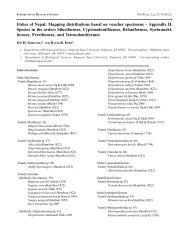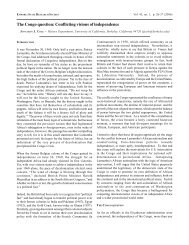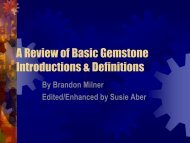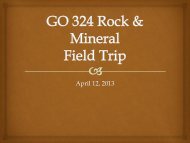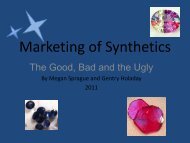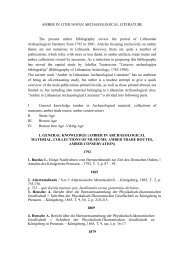Russian émigré artists and political opposition in fin-de-siècle Munich
Russian émigré artists and political opposition in fin-de-siècle Munich
Russian émigré artists and political opposition in fin-de-siècle Munich
- No tags were found...
Create successful ePaper yourself
Turn your PDF publications into a flip-book with our unique Google optimized e-Paper software.
Kochman 9German, foreign art <strong>in</strong>to its domestic exhibitions <strong>in</strong> an effortto provi<strong>de</strong> fertile ground from which new artistic<strong>de</strong>velopments could emerge. Such encouragement was animportant step <strong>in</strong> assert<strong>in</strong>g the Secession’s i<strong>de</strong>ology ofprogress <strong>and</strong> <strong>in</strong>novation, 15 which also solidified <strong>Munich</strong>’shistoric reputation as the <strong>in</strong>ternational art center of Germany. 16Although numerous national groups were represented at the<strong>Munich</strong> Secession exhibitions, the <strong>Russian</strong>s held a specialplace as a culture emerg<strong>in</strong>g artistically <strong>in</strong> their <strong>de</strong>parture fromRealism. Theirs was a shift similar to contemporary<strong>de</strong>velopments <strong>in</strong> the field, such as Symbolism, <strong>in</strong> Germany<strong>and</strong> other areas of Europe, yet the <strong>Russian</strong>s were perceivedby a number of Germans as uniquely visualiz<strong>in</strong>g the <strong>in</strong>ternalrealm. Karl Benda, critic for the Berl<strong>in</strong> journal Die FreieBühne for example, suggested <strong>Russian</strong> art was an appropriate<strong>and</strong> timely source of <strong>in</strong>spiration for German <strong>artists</strong> becauseof its high emotional content. He stated,By all means, we can also learn from the great <strong>Russian</strong>Naturalists. Learn? Rather, we are so <strong>de</strong>eply fond of them.And perhaps it is just this fondness that is thecharacteristic [necessary] for the revival <strong>and</strong> future<strong>de</strong>velopment of our art. We Germans have always been<strong>in</strong>st<strong>in</strong>ctively <strong>in</strong>terested <strong>in</strong> that art, which had the mostpowerful emotional content <strong>and</strong> has, through it, spurredus on to revived creativity once more. We once alreadydrifted away from the French to the English. This timethe <strong>Russian</strong>s <strong>and</strong> Sc<strong>and</strong><strong>in</strong>avians are our preference. Wehope it is a favorable omen. 17The <strong>Munich</strong> press similarly addressed the powerful <strong>and</strong>evocative quality of <strong>Russian</strong> culture as writers focused oncontemporary <strong>Russian</strong> art <strong>in</strong> terms of its ability to expresssometh<strong>in</strong>g <strong>in</strong>ternal. Review<strong>in</strong>g an [unnamed] exhibition <strong>in</strong>St. Petersburg for the <strong>Munich</strong> newspaper Die Allgeme<strong>in</strong>eZeitung <strong>in</strong> 1894, one critic noted,In spite of all the stirr<strong>in</strong>g melancholy <strong>and</strong> sad subjects ofthis exhibition, it still produces an encourag<strong>in</strong>gimpression. One notices <strong>in</strong> most of the pictures, that these<strong>artists</strong> are on the right track, although have not yet arrivedat their goal, artistic completeness. Nature <strong>and</strong> mank<strong>in</strong>dare <strong>in</strong>fused here with a spiritual mean<strong>in</strong>g; we don’t seemere Slavic copies, no photographs, rather animated <strong>and</strong>highly spirited representations from nature <strong>and</strong> the lifeof people. The mission for <strong>artists</strong> as for writers is thestruggle aga<strong>in</strong>st, repulsive, egoistic materialism <strong>and</strong> therevival of expired i<strong>de</strong>alism. 18The <strong>de</strong>parture from Realism for <strong>Russian</strong> <strong>artists</strong> wasun<strong>de</strong>rstood by such critics <strong>in</strong> terms of the <strong>de</strong>gree to which itdid not cont<strong>in</strong>ue to adhere to traditional aca<strong>de</strong>mic conventionsof <strong>in</strong>tegrated, unbroken l<strong>in</strong>es, <strong>de</strong>l<strong>in</strong>eated forms, a relativelynarrow color palette range, <strong>and</strong> generally <strong>in</strong>tegratedbrushwork. Their association with official art, dictated fromthe top down to <strong>artists</strong> as correct tra<strong>in</strong><strong>in</strong>g <strong>in</strong> aca<strong>de</strong>miesgoverned by monarchies <strong>in</strong>terested <strong>in</strong> ma<strong>in</strong>ta<strong>in</strong><strong>in</strong>g theirauthority was the metaphor to which such critics wereallud<strong>in</strong>g, exemplified <strong>in</strong> such pa<strong>in</strong>t<strong>in</strong>gs as Anton vonWerner’s, The Open<strong>in</strong>g of the Reichstag <strong>in</strong> the White Roomof the Berl<strong>in</strong> Palace by Wilhelm II on June 25, 1888, 1893(Fig. 2).To the <strong>de</strong>gree that contemporary <strong>artists</strong> were able tosurpass these obstacles us<strong>in</strong>g subjects of l<strong>and</strong>scapes <strong>in</strong> nature,of peasants work<strong>in</strong>g <strong>and</strong> episo<strong>de</strong>s <strong>in</strong> life which were not <strong>in</strong>the realm of official, government ritual <strong>and</strong> self-promotionwas associated with the true nation - life that was ‘of thepeople’ <strong>and</strong> the substance that ma<strong>de</strong> up the nation at its core.In addition to the pa<strong>in</strong>t<strong>in</strong>g’s subject, this was un<strong>de</strong>rstoodvisually through specific stylistic <strong>and</strong> technical attributes,which <strong>in</strong> relative comb<strong>in</strong>ation with each other took on<strong>political</strong> mean<strong>in</strong>g. 19 Thus, pa<strong>in</strong>t<strong>in</strong>gs <strong>in</strong> which objects lost someof their l<strong>in</strong>ear <strong>de</strong>f<strong>in</strong>ition through softened brushwork, hadnoticeable impasto <strong>and</strong> gradual <strong>in</strong>tensification of hue appliedas an organic outcome of the object’s <strong>in</strong>ternal character -rather than as a highlight<strong>in</strong>g technique <strong>de</strong>term<strong>in</strong>ed externallyby aca<strong>de</strong>mic convention - overcame the limitations whichhad become associated with official Realism.By the mid-1890s, <strong>Russian</strong> <strong>artists</strong> associated with this shift<strong>in</strong>clu<strong>de</strong>d Isaak Levitan, Valent<strong>in</strong> Serov, Vladimir Makovsky<strong>and</strong> others, whose work began to be shown regularly at the<strong>Munich</strong> Secession. Levitan participated <strong>in</strong> 1896, 1898 <strong>and</strong>1899, becom<strong>in</strong>g a member of the Secession <strong>in</strong> 1897. 20 Serovexhibited <strong>in</strong> 1896 <strong>and</strong> Makovsky <strong>in</strong> 1897 with four pa<strong>in</strong>t<strong>in</strong>gs,all of which were sold. 21 A prevalent feature of these <strong>artists</strong>’work was the application of ple<strong>in</strong>-air pa<strong>in</strong>t<strong>in</strong>g’s loosebrushwork <strong>and</strong> blen<strong>de</strong>d muted tones accentuated with smallerareas of heightened color. Russia’s l<strong>and</strong>scape <strong>and</strong> its peoplewere their common subjects, such as Levitan’s l<strong>and</strong>scapeGol<strong>de</strong>n Autumn. Slobodka, 1889 (Fig. 3) exhibited at theSecession <strong>in</strong> 1898. Here, Levitan portrays a rustic scene ofseven woo<strong>de</strong>n build<strong>in</strong>gs set on either si<strong>de</strong> of a dirt road. Thel<strong>and</strong> is partially cultivated to reveal small plots of farm<strong>in</strong>g bylocal resi<strong>de</strong>nts, yet some areas appear to have been left togrow wild. The build<strong>in</strong>gs are ren<strong>de</strong>red with relatively more<strong>de</strong>f<strong>in</strong>ition, <strong>in</strong> flat, thick strokes of grey pa<strong>in</strong>t, while the l<strong>and</strong>,particularly those trees <strong>and</strong> grasses left to grow on their own,are executed with a looser, lighter brush. Levitan heightensthe chang<strong>in</strong>g color of leaves on birches, from a saturated<strong>in</strong>tense orange <strong>in</strong> the foreground to a gradually toned downrange of orange reced<strong>in</strong>g back <strong>in</strong>to the distance. Formally,the color contrast - from low <strong>in</strong>tensity grey tones to bright<strong>and</strong> rich orange hues, represented a <strong>de</strong>parture from <strong>Russian</strong>Realism’s ten<strong>de</strong>ncy towards a more evenly toned darkerrangedcolor palette, such as Makovsky’s Anticipationdiscussed earlier. But it was Levitan’s ability to use color toarticulate the <strong>in</strong>herent, organic properties of nature whichled Igor Grabar to s<strong>in</strong>gle out his later l<strong>and</strong>scapes as the



